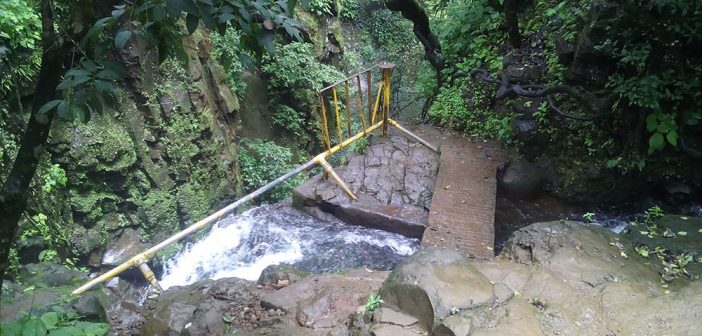Pavan Khind, located in the Sahyadri mountains near Kolhapur, Maharashtra, is an area that holds deep historical, cultural, and strategic significance for the state. The site is approximately 300 kilometers from Pune, a city known as the cultural capital of Maharashtra. While Pune has grown into a bustling metropolis, Pavan Khind remains a poignant reminder of the Maratha Empire’s glorious past, particularly its role in the epic Battle of Pavan Khind in 1660, which shaped the history and ethos of Maharashtra.
Historic Importance: The Battle of Pavan Khind
The location of Pavan Khind played a critical role in the defense of Shivaji Maharaj and his Hindavi Swarajya during the reign of the Marathas. In July 1660, as Shivaji Maharaj attempted to escape from the siege laid by Siddi Jauhar at Panhala Fort, he used this narrow mountain pass as a strategic point to ensure his safe retreat to Vishalgad. Bajiprabhu Deshpande and 300 Maratha soldiers heroically defended the pass against the overwhelming Adilshahi forces, allowing Shivaji to escape to safety and continue his campaign for Swarajya (self-rule).
The region of Pavan Khind, formerly known as Ghod Khind, was renamed by Shivaji Maharaj in honor of the sacrifice made by Bajiprabhu Deshpande and his troops. The pass was “purified” by their blood, and thus it was called “Pavan,” meaning pure.
Cultural and Historical Legacy
Pavan Khind is not just a landmark; it is a symbol of Maratha bravery, strategic warfare, and sacrifice, which continue to inspire the people of Maharashtra. The sacrifice of Bajiprabhu Deshpande and the Bandal Sena at this pass is remembered in folklore, songs, and popular culture, with annual treks and events that commemorate their heroic efforts. The pass represents the martial valor of the Marathas and is a source of pride for Maharashtra’s citizens.
Pune, being in close proximity, serves as a hub for historians and tourists who visit Pavan Khind as part of larger historical tours that also include the forts of Panhala and Vishalgad. The region’s strong historical connections have fostered a thriving cultural scene in Pune, with events such as reenactments, lectures, and historical seminars taking place regularly.
Modern-Day Significance and Connectivity
In modern times, Pavan Khind has become an important destination for history enthusiasts, trekkers, and cultural tourism in Maharashtra. Its proximity to Pune, Kolhapur, and Mumbai ensures that it remains accessible to a broad range of visitors. Several initiatives are underway to develop the area further as a cultural heritage site, which could include the establishment of museums, historical information centers, and guided tours that explore the events surrounding the Battle of Pavan Khind.
In terms of infrastructure, road connectivity between Pune and Pavan Khind has improved significantly over the years. The site is often included in trekking routes and nature trails, attracting adventure tourists. Maharashtra’s tourism department has been promoting the region as part of its efforts to showcase the state’s rich cultural and historical heritage.
Conclusion
Pavan Khind is a vital symbol of Maharashtra’s resistance against foreign forces and the bravery of the Marathas under Shivaji Maharaj. The battle fought here is not only a part of Maharashtra’s history but also a critical piece of the cultural identity of the state. Its proximity to Pune, a growing urban center, makes it a popular destination for both cultural tourism and historical education. The preservation of this site ensures that future generations understand the importance of sacrifice, strategy, and valor in shaping the state’s history.






